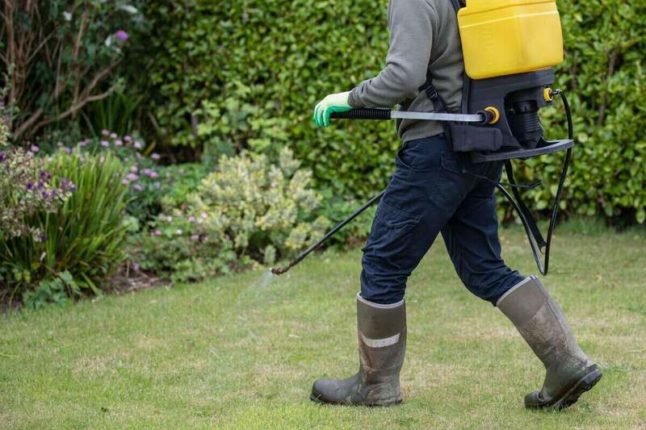
Some people take it for granted that a hot, humid Floridian winter means healthy, lush grass. Even though Central Florida has milder winters than most other parts of the country, our lawns still need some extra love during the winter. Winter lawn care in Orlando isn’t just about keeping your grass alive – it’s about preparing your lawn for the best possible growth next spring.
In this winter lawn care guide:
Winter Lawn Care Tips
Keeping your lawn in tip-top condition during winter requires a few special tricks and techniques. Winter is when Orlando’s warm-season grass types are at their most vulnerable, so let’s review some of the best approaches to help your lawn survive this trying time.
1. Fertilization

Have you had your lawn fertilized this fall? If not, winter isn’t the time to be doing it. At the latest, the proper time to fertilize a Central Florida lawn is in September or October. Any later, and you increase the odds that your grass will grow when the coldest weather hits (NOT a good thing).
Instead, plan to add fertilizer when your lawn starts growing again in the spring. Don’t worry if you notice brown patches in your lawn during winter. It’s natural for grass to go dormant during colder weather, and it will usually come back when warmer weather arrives.
If you’re really concerned, consider using lawn colorants to keep your winter grass looking green. Grass paint used to be just for golf courses and sports fields, but it’s becoming increasingly popular with homeowners.
2. Weed Control

Winter in Orlando brings a lot of trouble in the form of unwelcome weeds, especially annual bluegrass, henbit, wild geranium, and chickweed. While there are numerous pre-emergent herbicides available for controlling winter weeds, timing is everything with these products.
If you plan on using a pre-emergent herbicide in your lawn, be sure to apply it in October when nighttime temperatures start to dip below 55-60° Fahrenheit.
Keep in mind that you should never apply pre-emergent herbicides to soils that have been recently seeded. It is best to wait at least a few months after seeding before applying these products because they’ll interfere with seed germination.
3. Overseeding

If you’ve noticed your grass turning yellow or brown in the cooler months, it’s probably time for some overseeding. This is when you temporarily seed with cool-season grasses that can handle the cooler climate and stay green through winter.
One of the most popular grass types to overseed with in Central Florida is ryegrass – cost-effective and known for its rapid growth. For the best results, overseed after aerating the lawn.
It’s best to overseed when the average daily temperature starts to reach the mid-to-low 70s, which usually happens around October or November in Orlando.
4. Keep an Eye On Pests

In Orlando, we often find ourselves dealing with common pests like chiggers, grubworms, sod webworms, and mole crickets. These pests can damage your lawn by causing bare spots or brown patches in the grass. In Central Florida’s mild winters, these creatures don’t go dormant, so their damage to your lawn can be ongoing.
It pays to keep a close eye out for these pests and assess your lawn for signs of damage. Vigilance can pay off – catching pest problems early is key!
5. Rake Leaves

Fallen leaves can be a breeding ground for fungus and winter lawn diseases, and they can suffocate your grass. So, leaf removal isn’t just aesthetically pleasing; it’s also a great way to ensure your lawn survives winter and thrives come spring.
During winter, you want to keep the lawn clear of leaves so it still has access to oxygen, water, and nutrients. Don’t wait too long to rake them up. If left too long, they’ll be much harder to clean up.
6. Water When Appropriate

Your Orlando lawn still needs to be hydrated during winter, but not as much as in the summer. If you’re using an irrigation system, adjust it appropriately and, if necessary, switch to a manual sprinkler system for the cooler months.
Watch out for signs of overwatering, such as soggy soil or pooling water. Overwatering can attract pests and cause fungal lawn diseases. If temperatures fall below 40℉, refrain from watering your grass altogether.
FAQ About Winter Lawn Care in Orlando
Yes! Because of Central Florida’s mild winters, pests can be a nuisance year-round. Keeping an eye on your lawn for signs of damage is key, so you can spot issues early and take the necessary precautions (spraying pesticides or introducing natural predators, etc). Winter is all about vigilance and preventive strategies.
Temporarily coloring your lawn during the winter months with a turf colorant can be useful for presentation (especially if you’re planning to host an outdoor event), but you need to make sure that any paint or dyes used are specially formulated for this purpose.
These colorants need to be safe for the grass and the environment, so don’t be tempted by hardware store ‘bargains.’
Our top grass types for Orlando are Bermudagrass (for ease of maintenance and durability) and St. Augustinegrass (for visual appeal and versatility). They can provide year-round color and need little maintenance. Plus, they’re particularly drought-resistant.
A New, Healthy Lawn Every Year
Winter lawn care in Florida is not without its challenges. Colder weather, shorter days, and pests all pose a potential threat. With these winter lawn care tips, though, you can be sure your lawn is healthy and ready to burst into life in the spring.
Need a bit of a helping hand? Luckily, you can reach out to an Orlando lawn care pro to take the pressure off, so you can sit back and enjoy the results.
Main Photo Credit: Orlando World Center Marriott / Bernard Gagnon / Wikimedia Commons / CC BY-SA 3.0





